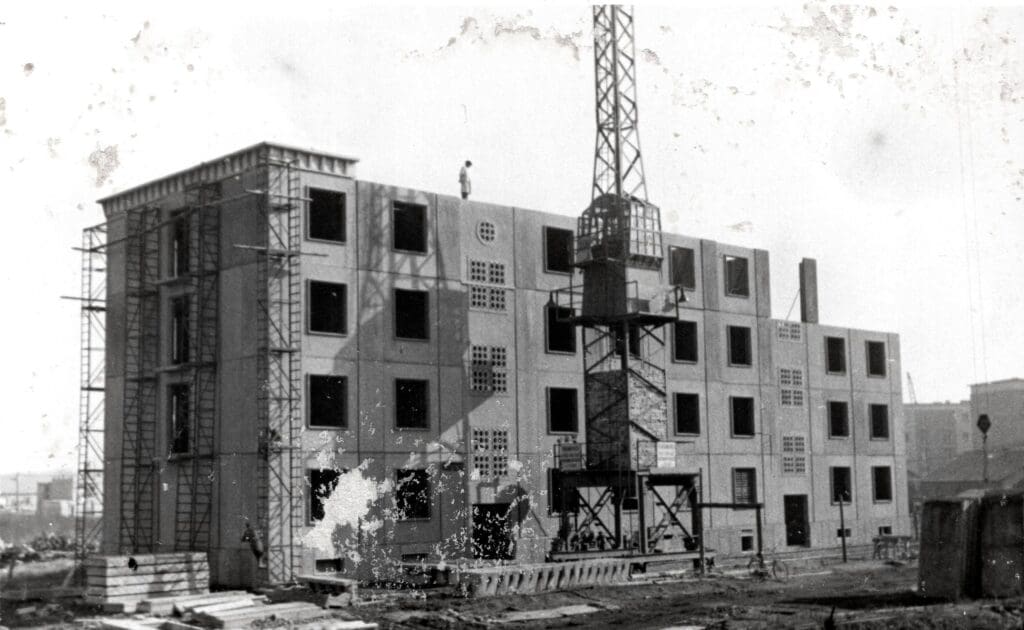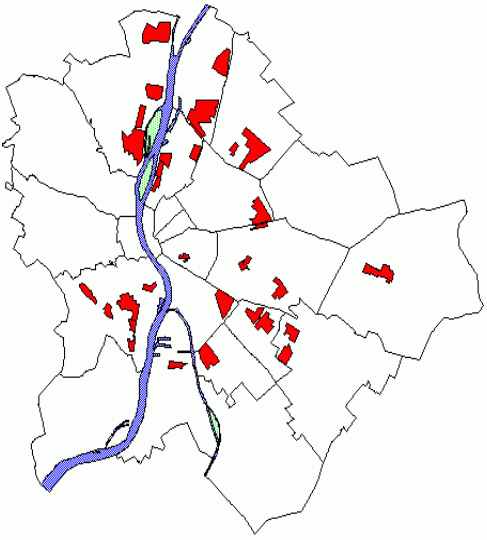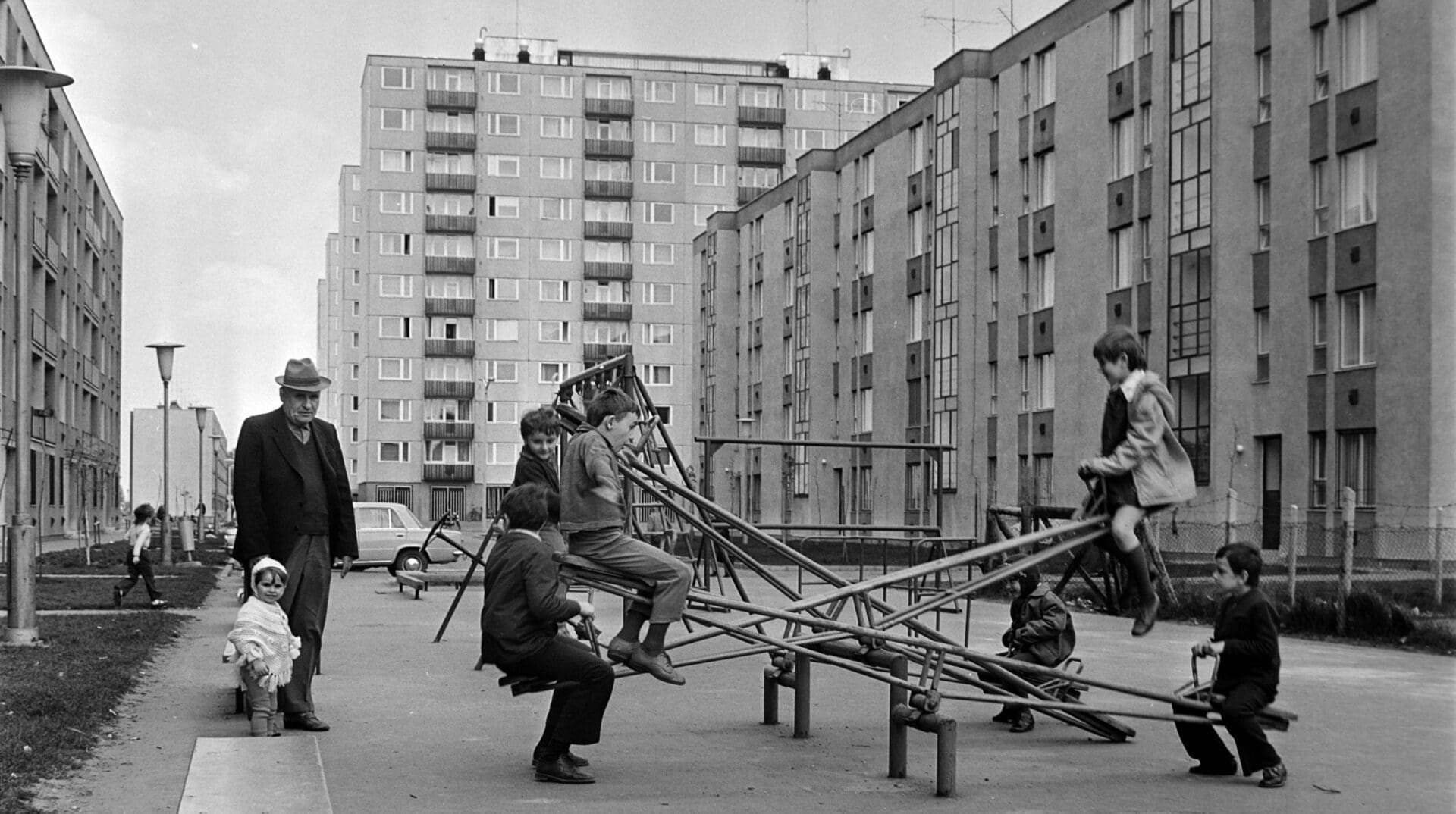The devastation of World War II, the decline in housing construction, and the rapid growth of urban populations led to a housing shortage in much of Europe. The modernization of agriculture brought large numbers of people to the cities, and industrialization went hand in hand with the building of new towns and parts of town to house the employed masses. Needs then met with ideological issues, as the party-state leadership also wanted to represent the efficiency and strength of the socialist economy by rapidly building houses.
In the countries of Central and Eastern Europe, after World War II and for four decades afterwards, the construction of housing estates became dominant, providing an opportunity for the realization of the socialist ideal of man and the family model, and together with that, bringing about significant changes in the structure of settlements, society, and the economy.
One of the most pressing problems of the 20th century, the housing crisis in Hungary, could only be solved in the 1970s and 1980s due to industrialized housing construction. After WWII, 14,000 flats became completely uninhabitable, however, the destruction was not consistent throughout the capital, as the Allies bombed mainly industrial and railway infrastructures, but due to inaccuracy, often hit residential buildings near the targeted facilities. Despite the devastation, the housing crisis can be traced back to the second half of the 19th century, when the urban industry began to develop massively and the masses, made mobile by the abolition of serfdom, began to flow into the cities in search of a better life and work. After the Treaty of Trianon, large numbers of people from the breakaway regions also arrived in the mother country, further deepening the housing crisis.
It was these environmental and social influences in the last century that triggered the fundamental ideas to which 20th-century urbanism can be traced back. This level of development and population growth could not be matched by the historicist, often number-speculative tenement building of the capital, with masses of people living in poor conditions, in wagon and cave housing, or slums.
In the following years, socialist realist architectural principles were enforced by Imre Perényi, who returned from Moscow in 1950, thus the following year the ‘socrealist’ style became the dominant one. The edifices of this style were built using mostly hand-made techniques, with meanders, ledges, and lesenes at a relatively high cost, but at a very slow pace compared to the number of apartments needed. Realizing this, the state recognized that it would not be able to build sufficient housing at such a pace—therefore,
after Stalin’s death, socrealism was replaced by industrialized prefabrication and factory technology.
The main positive aspects of prefabricated construction elements were their cheapness and speed of production, as they could be brought into operational status with little reworking, in addition to their structural properties. The panels were reinforced in the factories, then assembled on-site, the joints were put together along the edges of the body by further reinforcement, like boxes, and finally, after shuttering, the structure was stabilized by concreting.
Mass housing development was initially concentrated mainly in northern Europe, including Denmark. In the early 1960s, the Hungarian government was to purchase the Danish Larsen-Nielsen technology, but for loyalty to the Council for Mutual Economic Assistance (Comecon) and for financial reasons, the government opted for the Soviet equivalent of the prefab factory.

In 1962 the decision was made to buy the first Soviet factory, and by 1964–65 the first experimental prefabricated housing factory was built in Budapest, on Szentendrei Road, under the name of Budapest Housing Combine. Later, the housing factory No II (Larsen-Nielsen) was built on Illatos Road in the 9th district, No III on the outskirts of Dunakeszi, and in 1974, No IV on the border of the 11th and 22nd districts. The Zugló housing estate used the products of the No II factory.
Each factory produced different elements; the assembly of the panels made up a unit, and these modules together a block. The units were the ‘type flats’, of which a housing factory produced about six or eight types and from which the architects built the edifices. Besides, the Ministry also specified which housing factory’s elements should be used in the design of a particular building, so the architects were in close, constant contact with the Budapest Construction Investment Company (FŐBER) because if a factory ran out of a sectional element, that could not be used in the design.
There were two possible locations for the construction of the various housing giants to solve the social problem, either in the outdated, high-density urban core, where it could be done less effectively by reorganizing the properties, making the reconstruction of the area more expensive, or in the previously undeveloped areas on the outskirts of the city. As land prices were not taken into account at the time of the major public constructions, there was no incentive for the state to make better and more economical use of land closer to the urban core and to maintain the inner parts of town. Because of the problems of quantity production and the issues mentioned above, the new houses were already the subject of much criticism during their building, from architects, urban planners, and the general public alike, as the tightly-paced constructions were accompanied by poor implementation and sloppy workmanship.

The housing estates followed the strict principles of modern urban architecture: freestanding point-blocks and terraced houses were built, streets and courtyards, the previous urban structure, were practically eliminated, and the strict system of standards regulated both the apartments and the estates as a whole to the smallest detail. The pressure to meet the design constraints meant that the ideas of construction companies and housing factories overrode those of the architects, and it was often the case that the institutions and service units planned for the estates could not be built. The quantity constraints meant that factories produced few types of elements, so there was little opportunity to modify layouts and the appearance of buildings, and contractors were reluctant to create more varied site layouts for various reasons.
The services and community centres were located in the centre of the housing estates, with no shops or shop windows, creating large, homogeneous commuter towns. The primary concern in the construction process was not quality housing, but speed and economy, so it is no coincidence that it was thought that the building of prefabs was in effect the housing of the future.
To address the housing shortage, nearly 1 million dwellings were built under the housing programme between 1961 and 1975,
300,000 of them in Budapest; a large part of the country’s population still lives in the apartments built during that period to this very day.
Despite the difficulties and the negative aspects, anyone who has lived in or visited a prefab will never forget it. Public housing cannot be said to be entirely negative or positive, can be loved or disliked, but it is a legacy from the past that defines who we are. The fact that nowadays every home is close to a human infrastructure that meets people’s needs, such as kindergartens and schools, is largely due to public social policy and housing developments. In addition, it is also very important to mention that the building of prefabricated houses meant modernization back then, as most people moved from shared rentals to relatively affordable prefabs—people felt that having such housing practically brought a different dimension to their whole life, meaning a huge improvement at the time, both socially and economically. Problems can and should be alleviated at both a social and technical level, as housing estates, often of city size, are an integral part of our past, present, and future.
Read more on the history of socrealist prefabricated housing in Hungary:
Click here to read the original article.







